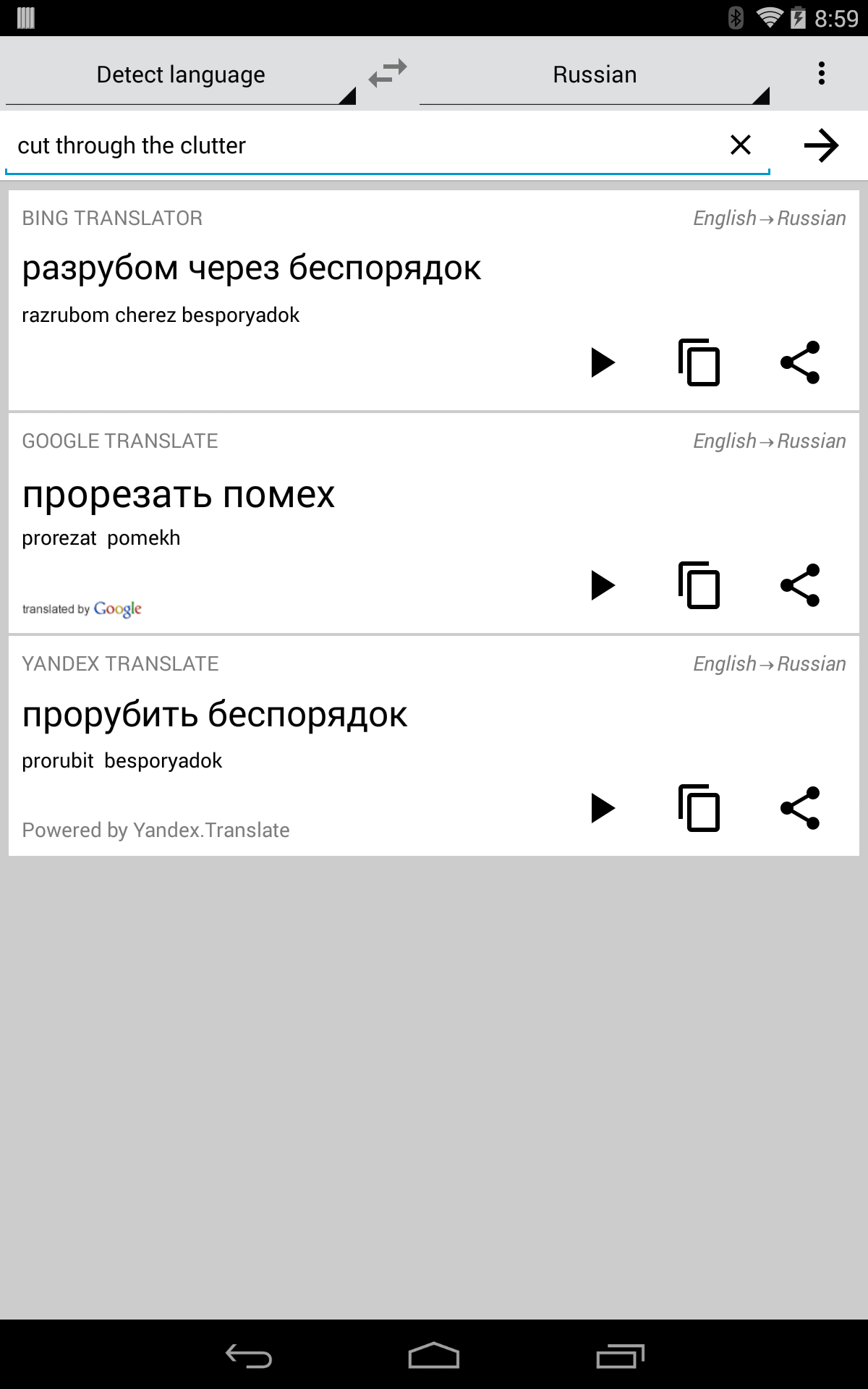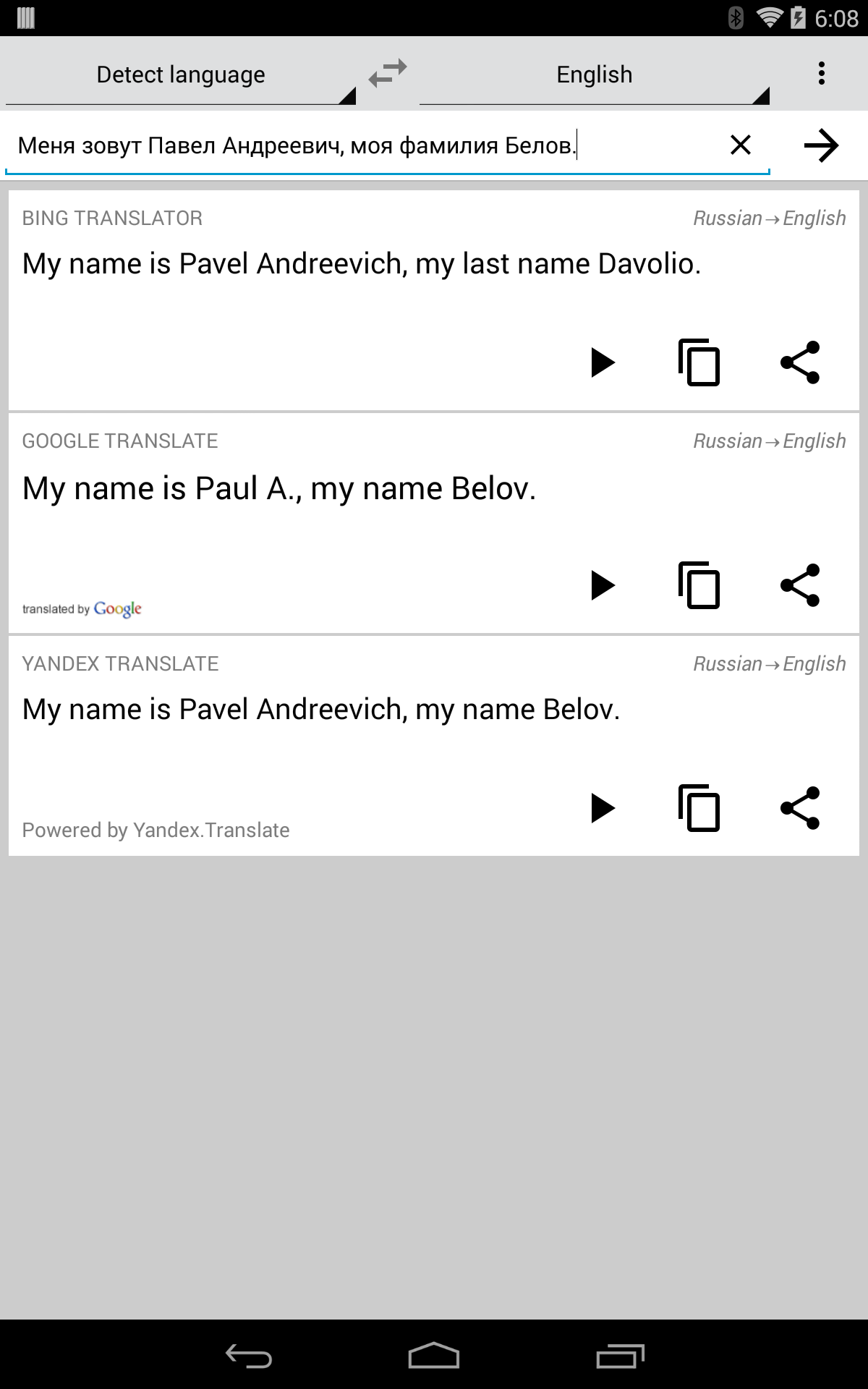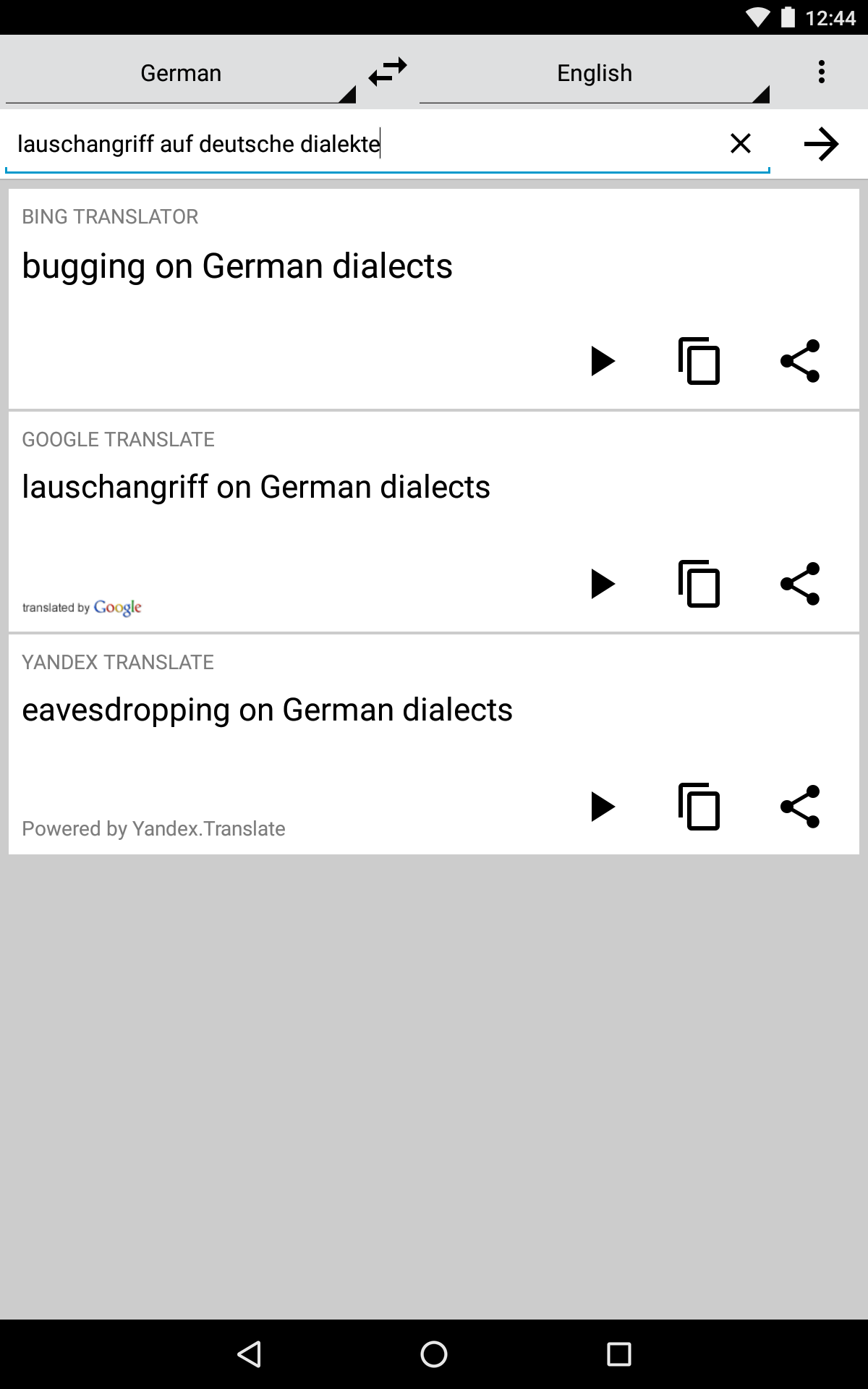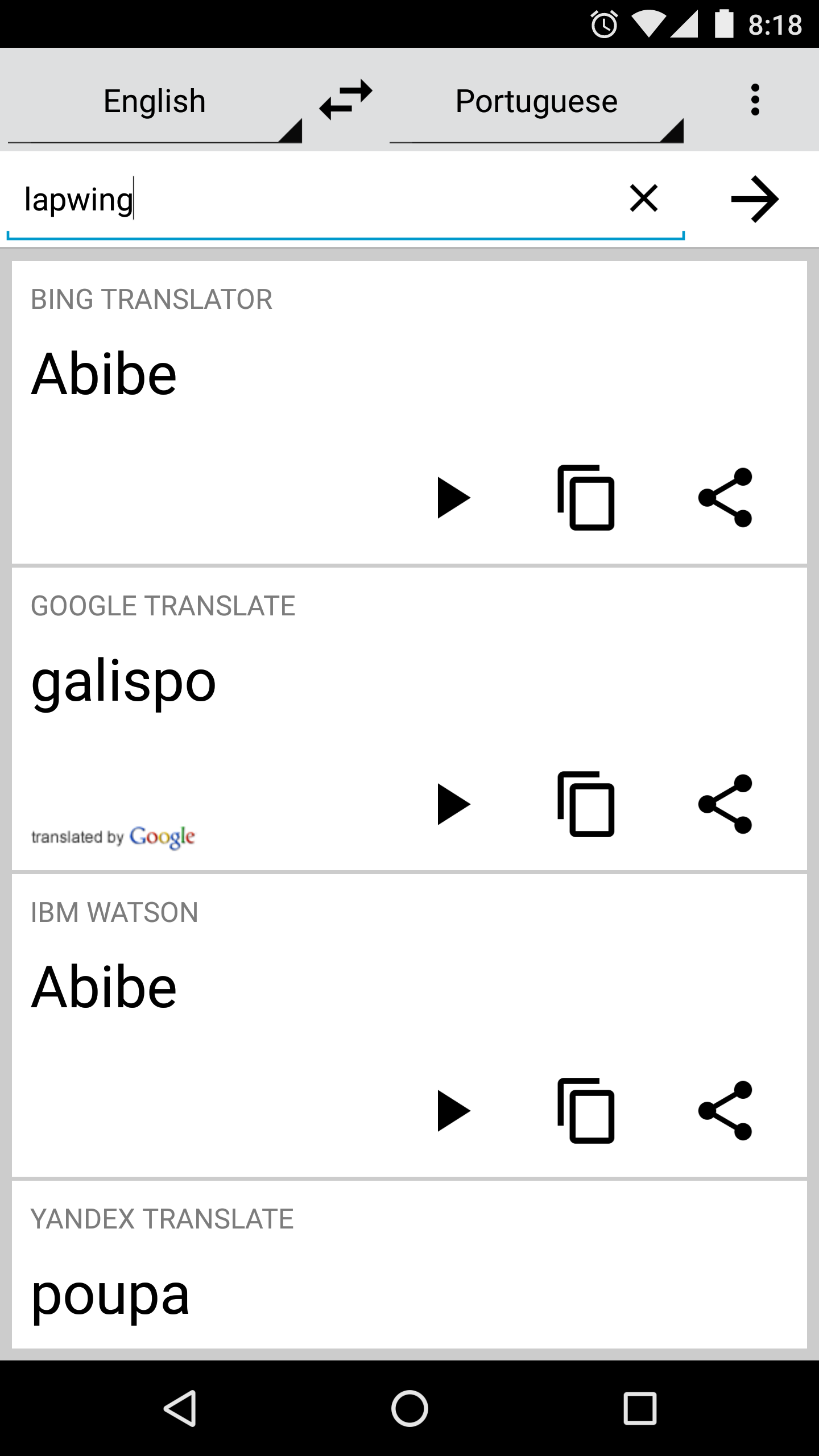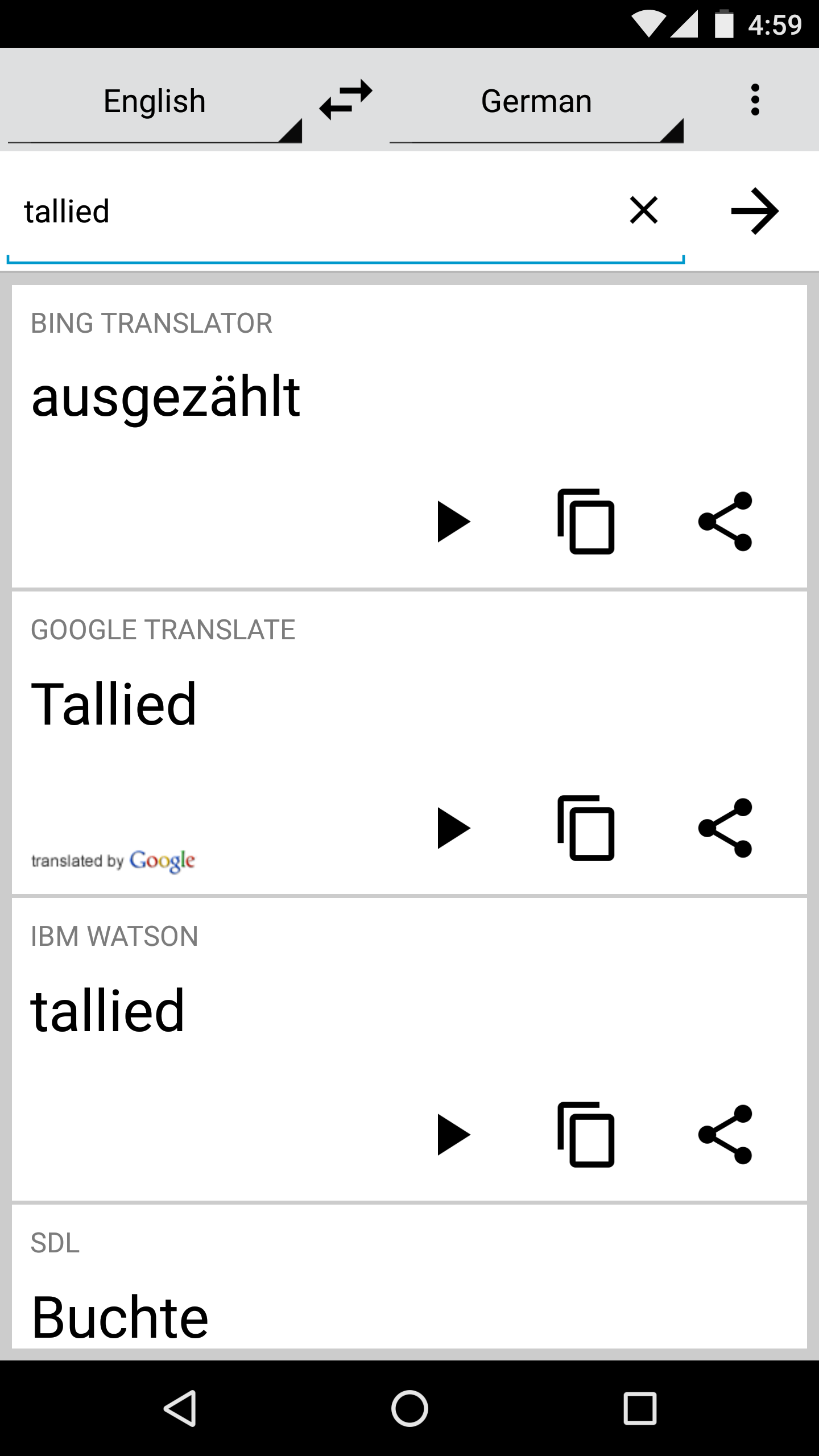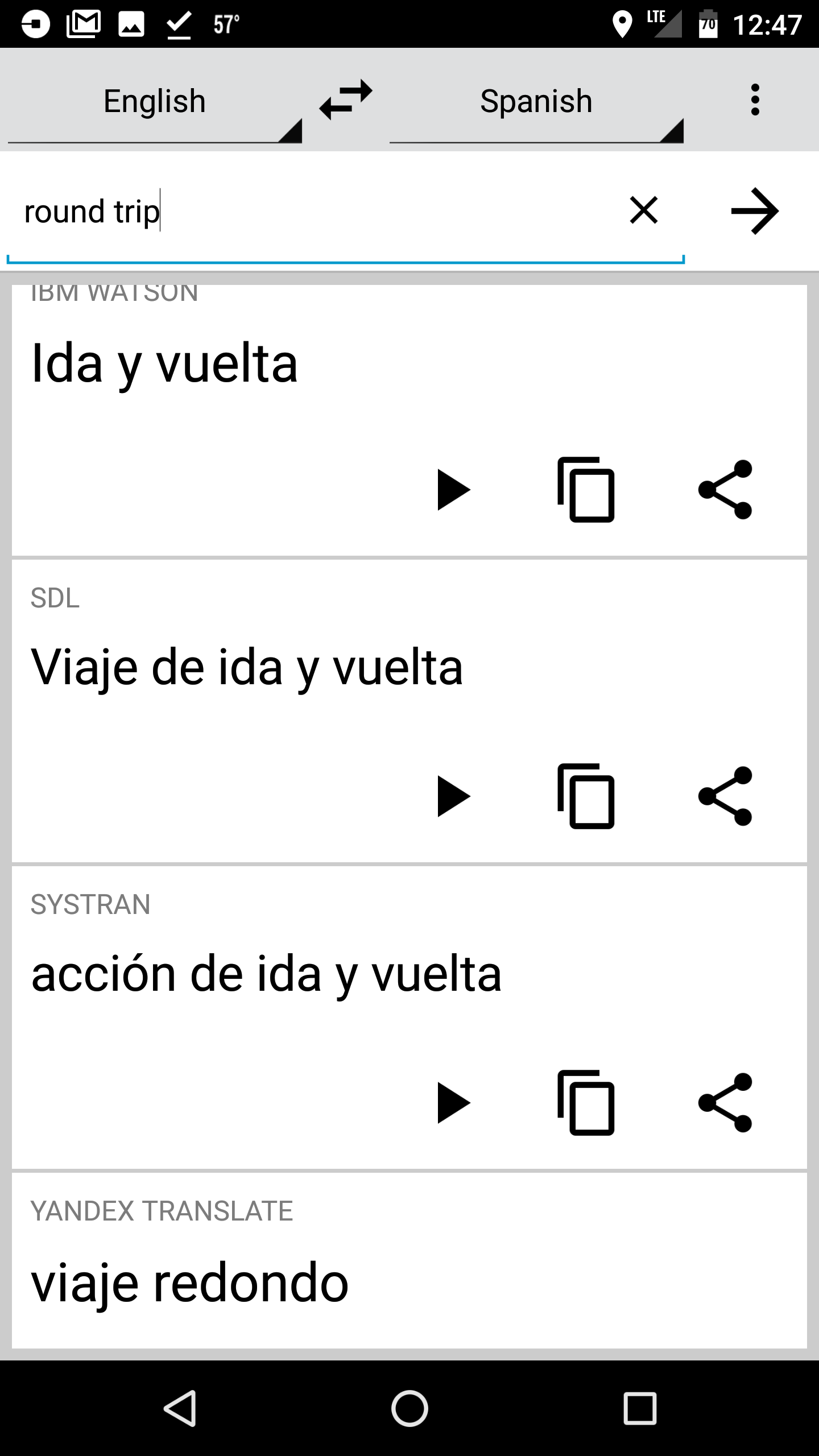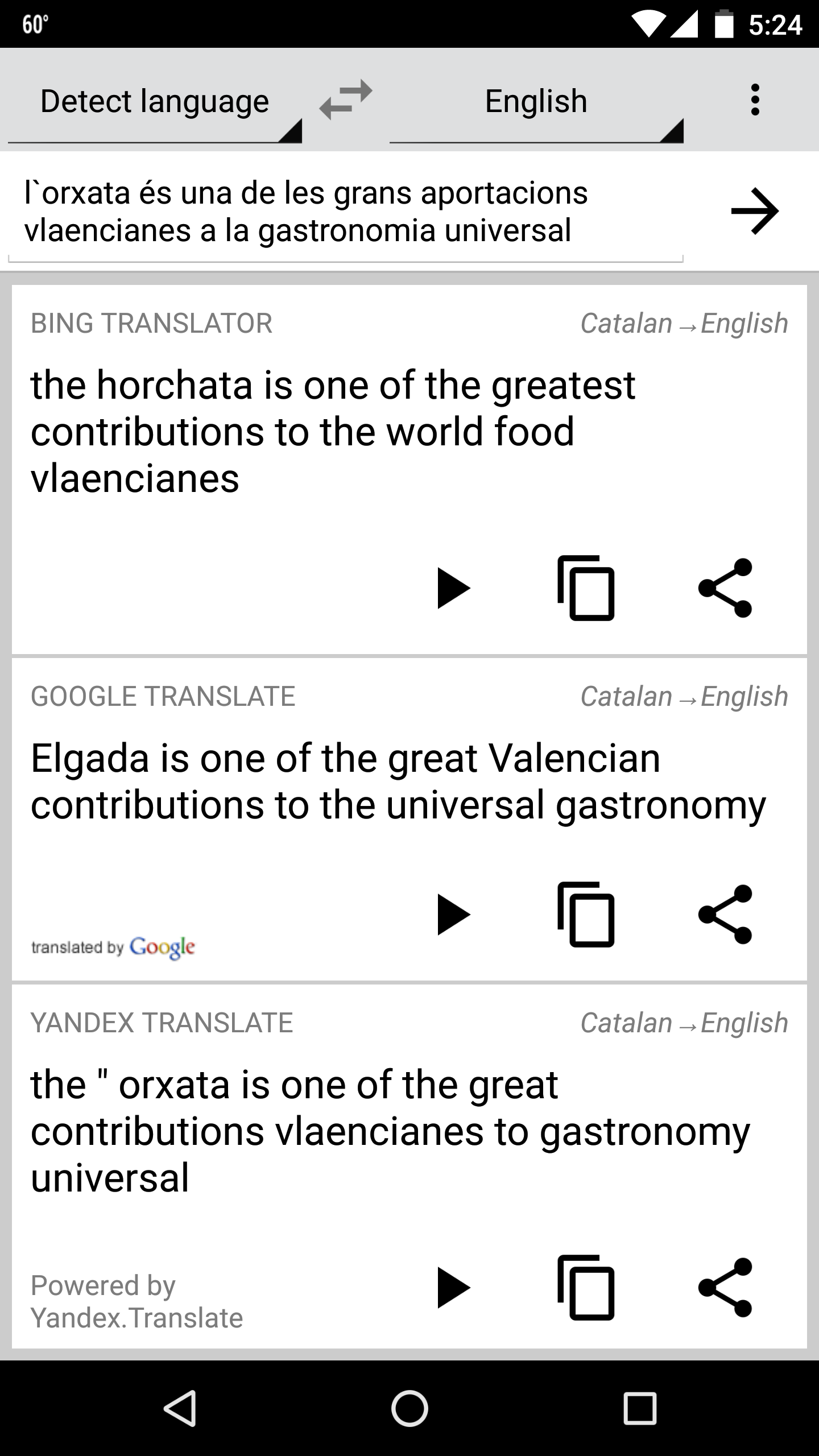Android-Based Parallel Machine Translations as an Aid to Human Translators
Anyone who’s used machine translation tools like Google Translate knows that machine translation is an inexact science. Mistakes and mistranslations are common, and the accuracy of machine translations seems to range from “acceptable” to “completely wrong.” Clearly, there is an opportunity for new approaches to help people get better results from machine translation.
Translation inaccuracies arise due to imperfect language models and unclear input text. Machine translation systems tend to have problems when translating text between languages that are very linguistically different from one another. The format of the text makes a huge difference too: Input text that is short or idiomatic similarly leads to inaccuracies.
Even with these inaccuracies in translation, the resulting imperfect translations can leave the user with the gist of the original underlying meaning, or at least a hint or a starting point for a better translation. Human translators and those with some proficiency in the target language will often use more than one system– both Google and Microsoft, for example–to help them compare results and choose between the translations.
Below is a link to an Android app I’ve developed that performs machine translations in parallel using different systems to make this comparison easier. The app shows results on the screen at the same time from different machine translation systems: Google Translate, Microsoft Translator, and Yandex Translate. I’d be interested in getting feedback on whether this approach is helpful for mobile users.
[Edit: Link Removed]
Screenshots
The screenshots below illustrate cases where translations are uneven for various reasons, and where the display of multiple translations at once seems to be more helpful than having a single translation from any one source.
